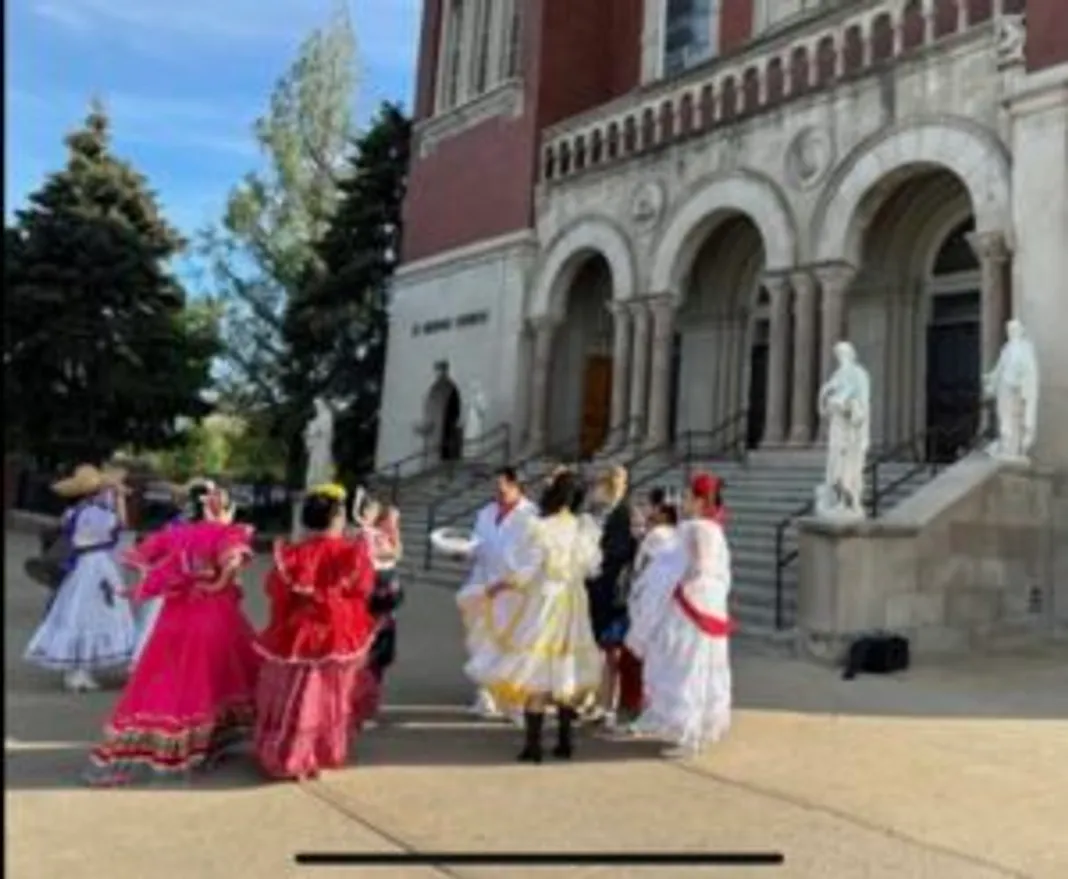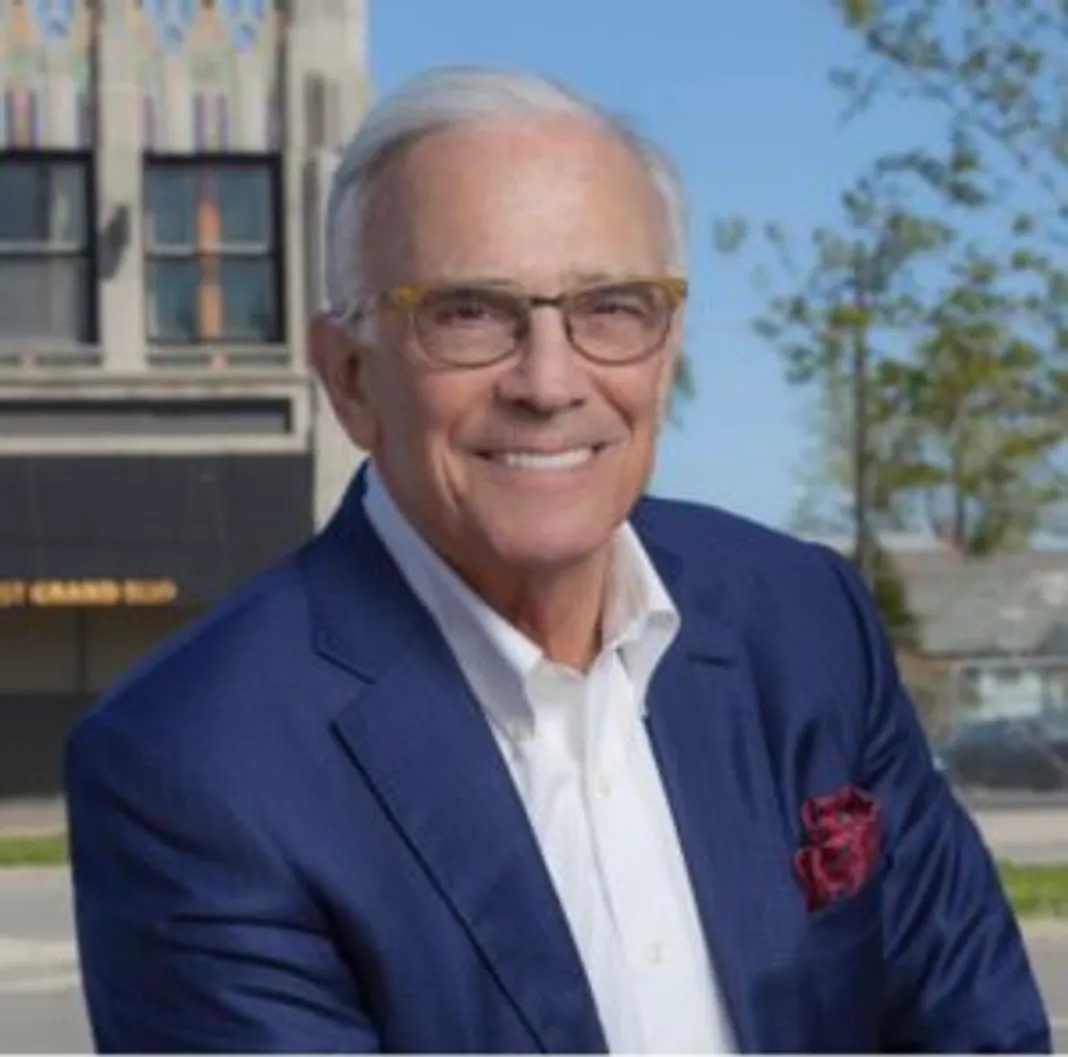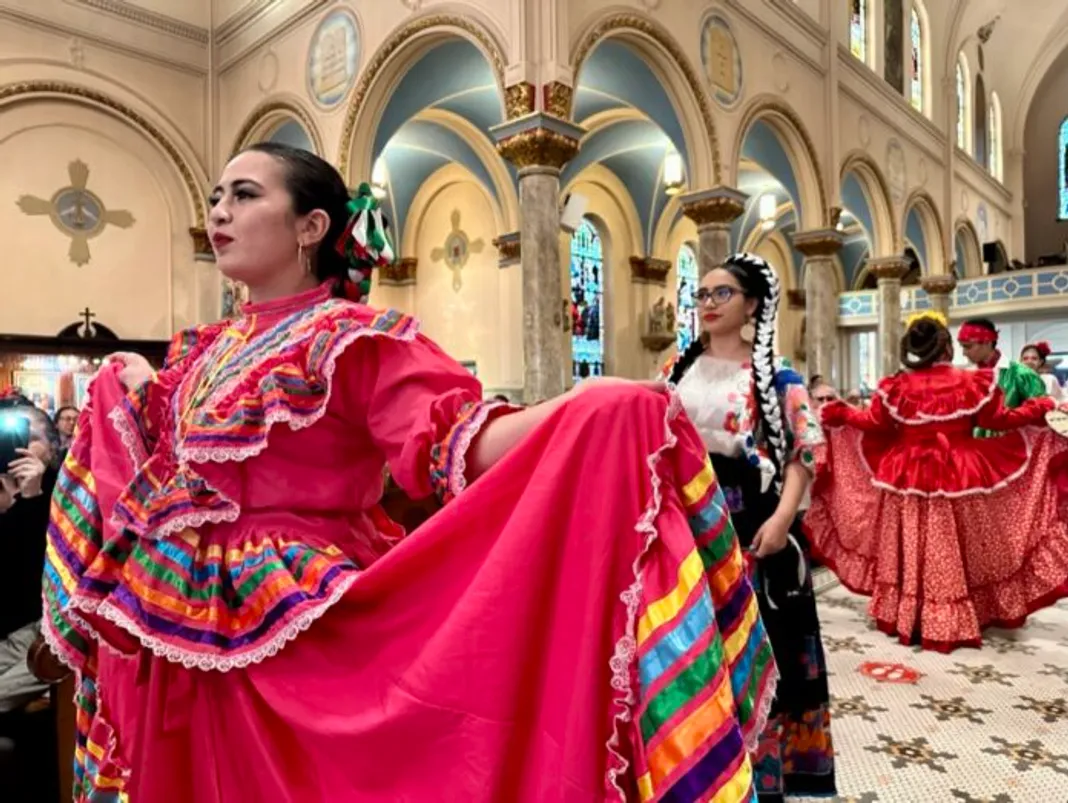Recently in the New York Times, a story appeared under the headline “A Pop Star Filmed A Music Video In a Church. The Priest Was Punished.” The pop star is Sabrina Carpenter, a former Disney child star with 31 million Instagram followers. The video, which has been viewed nearly ten million times, animates her new song, “Feathers,” and shows Sabrina in a short, provocative black dress and veil moving through the center aisle of a church up to an altar lined with pastel-colored coffins, then moving back through the aisle and out the front door. Further scenes include depictions of two young men reading a book titled Tampons Should Be Free. The church in question is the Annunciation of the Blessed Virgin Mary, located in the Williamsburg section of Brooklyn.
This past spring, in the Southwest neighborhood of Detroit, the Detroit Symphony Orchestra, with a mere 46,000 Instagram followers, brought a free concert to St. Hedwig’s, a 120-year-old Catholic church serving an ethnically diverse community with a distinct Hispanic flavor. The Sabrina Carpenter story recalls the event—not because the experiences were similar, but because they were so different.
The Detroit concert was part of a neighborhood concert series that brings free classical and ethnic music to neighborhoods of Detroiters who might be unable to afford transportation or ticket costs at Orchestra Hall downtown. There were no videos to promote pop music on YouTube or Instagram or TikTok. No scantily clad ladies sashaying down the central aisle. Which is not to say there was no dancing.

The last two pieces performed by the Detroit Symphony were chosen precisely to accompany dancing in the center aisle by the Ballet Folklorico Moyocoyani Izel. A Detroit-based troupe, Ballet Folklorico is part of the Detroit cultural tapestry. Their motto is: “You don’t stop dancing because you grow old, you grow old because you stop dancing.” In past days—the Baroque period and earlier—much, if not most of the music was composed to be played in church. Dancing in church was, however, not common. Although a familiar Baroque form was the dance suite, the suites were designed for listening and not to accompany dancers.
At St. Hedwig’s, the addition of the dancers in full Mexican dress seemed both natural and respectful. While the music alone had the full, warm sound that is the hallmark of a performance in church, the addition of the dancers converted what had been a concert into what became a memorable and joyous experience.
In Brooklyn, in November, an outcry over the controversial music video has led to Bishop Robert J. Brannon of the local diocese relieving Msgr. Gigantiello of his administrative duties. Bishop Brannon subsequently held a Mass of Reparation to reconsecrate the church. The five thousand dollars the video’s producers paid for use of the church was donated to Bridge to Life, a women’s support center. Also in November, Ms. Carpenter gave her first comments about the incident to Variety.
“We got approval in advance,” she said in an interview, “and Jesus was a carpenter.”
Times are far calmer at St. Hedwig’s, which is holding a series of free icon painting workshops for the holiday season.



